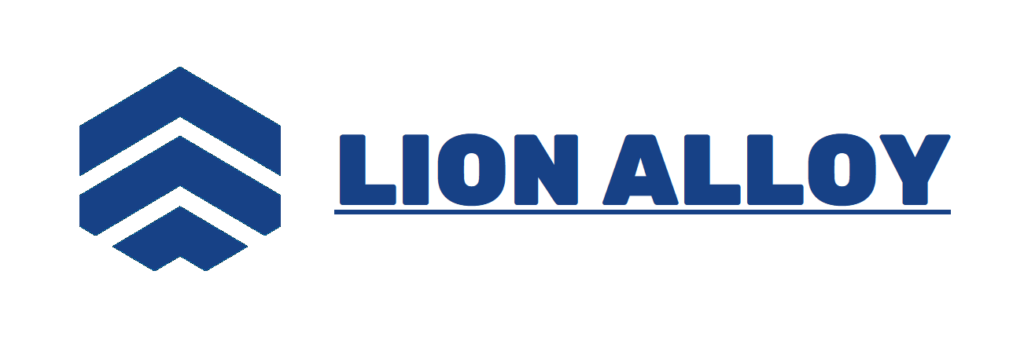Introduction
Nimonic 80A est un superalliage à base de nickel spécialement conçu pour les applications à haute température, offrant des propriétés mécaniques exceptionnelles et une résistance à l'oxydation et à la corrosion. L'usinage des composants Nimonic 80A est un processus critique qui nécessite une compréhension complète des propriétés de l'alliage et des techniques d'usinage appropriées. Cet article explore diverses techniques d'usinage, outils et paramètres spécifiques à Nimonic 80A, ainsi que les défis rencontrés lors de l'usinage et des solutions pour optimiser le processus.
1. Propriétés du Nimonic 80A pertinente pour l'usinage
Avant de plonger dans les techniques d'usinage, il est essentiel de comprendre les propriétés uniques du Nimonic 80A qui influencent sa machinabilité.
1.1 Propriétés mécaniques
Nimonic 80A présente une combinaison de forte résistance, de ductilité et de ténacité, en particulier à des températures élevées. Cela en fait un candidat idéal pour exiger des applications, mais présente également des défis pendant l'usinage en raison de la tâche du travail.
Tableau 1: Propriétés mécaniques de Nimonic 80A
| Propriété | Valeur |
|---|---|
| Limite d'élasticité (MPa) | 600 |
| Résistance à la traction ultime (MPa) | 860 |
| Allongement (%) | 30 |
| Dureté (HB) | 200 |
| Module d'élasticité (GPA) | 200 |
1.2 Propriétés thermiques
Nimonic 80A maintient son intégrité mécanique à des températures élevées, ce qui est crucial lors de l'examen des performances de l'outil de coupe.
Tableau 2: Propriétés thermiques de Nimonic 80A
| Propriété | Valeur |
|---|---|
| Point de fusion (° C) | 1300 |
| Conductivité thermique (w / m · k) | 11.5 |
| Coefficient de dilatation thermique (° C) | 13,3 x 10⁻⁶ |
2. Techniques d'usinage pour Nimonic 80A
2.1 tournant
Le virage est un processus d'usinage commun pour produire des composants cylindriques de Nimonic 80A. Le choix de l'outil de coupe et des paramètres influence considérablement la qualité et l'efficacité du processus d'usinage.
2.1.1 Sélection d'outils
Les outils en carbure sont généralement recommandés pour tourner Nimonic 80A en raison de leur dureté et de leur résistance à l'usure. Les outils en carbure revêtus peuvent encore améliorer les performances en réduisant la friction et en améliorant la durée de vie des outils.
Tableau 3: Types d'outils recommandés pour tourner Nimonic 80A
| Type d'outil | Type de revêtement | Avantages |
|---|---|---|
| Outil en carbure | Étain (nitrure de titane) | Résistance à l'usure accrue |
| Outil en céramique | Al2O3 (alumine) | Vitesses de coupe élevées |
| CBN (nitrure de bore cubique) | – | Résistance à l'usure supérieure à des températures élevées |
2.1.2 Paramètres et techniques
Les paramètres optimaux pour la transformation de Nimonic 80A comprennent:
Tableau 4: Paramètres de virage
| Paramètre | Valeur recommandée |
|---|---|
| Vitesse de coupe (m / min) | 30-50 |
| Taux d'alimentation (mm / révérend) | 0.1-0.3 |
| Profondeur de coupe (mm) | 1-5 |
Pour améliorer l'élimination des puces et réduire la production de chaleur, utilisez un débit élevé de liquide de refroidissement.
2,2 fraisage
Le fraisage Nimonic 80A nécessite un contrôle minutieux de la sélection des outils et des paramètres d'usinage. Le processus peut générer une chaleur importante en raison de la force et de la dureté de l'alliage.
2.2.1 Sélection d'outils
Semblable au tournage, les outils en carbure sont préférés pour les opérations de fraisage. De plus, l'utilisation des usines d'extrémité avec un angle de râteau positif peut faciliter un meilleur flux de puces.
Tableau 5: Types d'outils recommandés pour mourir Nimonic 80A
| Type d'outil | Caractéristiques | Avantages |
|---|---|---|
| Moulin à extrémité en carbure solide | Design à 4 flux | Amélioration de l'élimination des puces |
| Moulin à carbure en revêtement | Tialn (nitrure d'aluminium en titane) | Life d'outil amélioré |
| Moulin à face | Inserts remplaçables | Flexibilité dans la coupe de la géométrie |
2.2.2 Paramètres et techniques
Tableau 6: paramètres de fraisage
| Paramètre | Valeur recommandée |
|---|---|
| Vitesse de coupe (m / min) | 20-40 |
| Taux d'alimentation (mm / dent) | 0.05-0.2 |
| Profondeur de coupe (mm) | 1.5-4 |
L'utilisation d'un coupeur de plus grand diamètre peut réduire les forces de coupe et améliorer la finition de surface. Utilisez une généreuse alimentation de liquide de refroidissement pour contrôler la température et prolonger la durée de vie de l'outil.
2.3 Forage
Les opérations de forage sur Nimonic 80A nécessitent également une considération attentive de la sélection et des paramètres des outils pour assurer une création de trous efficace sans usure d'outil excessive.
2.3.1 Sélection d'outils
Des exercices en acier à grande vitesse (HSS) ou en carbure avec un point pointu sont recommandés pour le forage nimonique 80A.
Tableau 7: Types de forets recommandés
| Type de perceuse | Caractéristiques | Avantages |
|---|---|---|
| Perceuse en carbure | Enduit de moule | Se résistance à l'usure |
| Perceuse HSS | Angle de point variable | Polyvalent et rentable |
2.3.2 Paramètres et techniques
Tableau 8: Paramètres de forage
| Paramètre | Valeur recommandée |
|---|---|
| Vitesse de coupe (m / min) | 10-25 |
| Taux d'alimentation (mm / révérend) | 0.05-0.1 |
| Diamètre de perceuse (mm) | Jusqu'à 20 |
Utilisez le liquide de refroidissement pour éviter la surchauffe et aider à l'élimination des puces. Le forage à picoter peut aider lors du forage des trous profonds, car il minimise l'accumulation de chaleur.
3. Défis dans l'usinage Nimonic 80A
Malgré ses propriétés avantageuses, l'usinage Nimonic 80A présente plusieurs défis.
3.1 Travail en durcissant
Un défi important est la tendance en durcissement du travail du Nimonic 80A. Cela se produit lorsque le revêtement et la structure du matériau durcissent en raison de la déformation pendant l'usinage.
Tableau 9: Effets du durcissement du travail
| Effet | Description |
|---|---|
| Augmentation de l'usure des outils | La vie de l'outil plus court |
| Mauvaise finition de surface | Nécessite des opérations de finition supplémentaires |
| Forces de coupe plus élevées | Accrue de la charge machine |
3.2 Génération de chaleur
L'usinage Nimonic 80A génère une chaleur substantielle en raison de sa forte résistance, conduisant à une distorsion thermique et à l'usure des outils.
Tableau 10: Techniques de gestion de la chaleur
| Technique | Description |
|---|---|
| Application de liquide de refroidissement | Utilisez des liquides de refroidissement pour réduire la température |
| Réglage de la vitesse de coupe | Réduire les vitesses de coupe pour minimiser la production de chaleur |
4. Optimisation des processus d'usinage
Pour améliorer l'efficacité de l'usinage Nimonic 80A, plusieurs stratégies peuvent être utilisées.
4.1 revêtements d'outils
L'utilisation de revêtements avancés sur les outils de coupe peut considérablement améliorer leurs performances et leur durée de vie. Des revêtements comme l'étain, le tialn et le CBN offrent une résistance à l'usure accrue et réduisent la friction pendant l'usinage.
Tableau 11: Comparaisons de revêtement d'outils
| Type de revêtement | Avantages | Applications |
|---|---|---|
| Étain | Frottement réduit | Usinage général |
| Tialn | Résistance à haute température | Usinage à grande vitesse |
| Cbn | Usinage des matériaux durs | Applications lourdes |
4.2 Réglage des paramètres de coupe
L'ajustement des paramètres de coupe en fonction des caractéristiques de l'opération spécifique et de l'équipement utilisé permet l'optimisation de la durée de vie et de la productivité des outils.
4.3 Techniques d'usinage avancées
L'utilisation de techniques telles que l'usinage à grande vitesse (HSM) ou l'usinage cryogénique est prometteuse d'améliorer les performances lorsque vous travaillez avec Nimonic 80A.
Tableau 12: techniques d'usinage avancées
| Technique | Avantages |
|---|---|
| Usinage à grande vitesse (HSM) | Réduction des forces de coupe |
| Usinage cryogénique | Augmentation de la durée de vie de l'outil |
5. Conclusion
L'usinage Nimonic 80A nécessite un mélange de techniques, d'outils et de paramètres opérationnels appropriés adaptés à ses propriétés uniques. Comprendre les caractéristiques de cet alliage et les défis liés à l'usinage peuvent entraîner de meilleures performances et efficacité dans la fabrication. En tirant parti des bons outils, des revêtements et des stratégies d'usinage, les fabricants peuvent optimiser la production de composants Nimonic 80A, assurant la précision et la qualité tout en améliorant la productivité globale. Alors que l'industrie continue d'évoluer, se tenir au courant des progrès des technologies et techniques d'usinage sera essentiel pour maintenir un avantage concurrentiel dans le travail avec des matériaux à haute performance comme Nimonic 80A.


